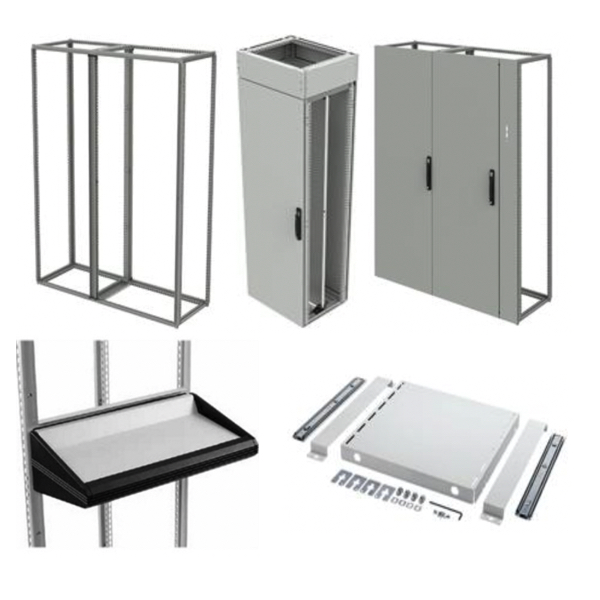Modular Enclosures

Modular enclosures provide customizable, durable, and scalable protection for sensitive electrical and industrial equipment. Designed for flexibility, these enclosures can be configured and expanded as system requirements evolve, making them ideal for automation, control panels, and IT infrastructure in both industrial and commercial environments.
Each modular enclosure is built with interchangeable panels, frames, and accessories for easy customization and assembly. Their modular design simplifies installation and maintenance while ensuring compliance with NEMA and IP standards for protection against dust, water, and environmental exposure.
Whether used indoors in a cleanroom or outdoors in harsh industrial environments, modular enclosures deliver the versatility and strength needed to safeguard mission-critical systems. With options for removable panels, cable entry systems, and ergonomic doors, these enclosures combine performance, convenience, and long-term reliability.
More Information about Modular Enclosures
When assembly and maintenance have been simplified to the point of ease, then there is no question as to what direction to proceed with the installation. For this reason, we can talk about modern enclosures that are "modular," meaning that the units are relatively small and easily brought together to form something large. These modular enclosures are not only ideal for working on test and computing equipment at home but also bylaws-compliant, as they can integrate into every residential or commercial environment found (i.e., indoors or outdoors).
FAQs
Q: What makes modular enclosures different from standard enclosures?
Modular enclosures feature interchangeable components that allow flexible configuration, expansion, and maintenance, unlike fixed standard enclosures.
Q: Are modular enclosures suitable for industrial environments?
Yes. They are designed to withstand demanding conditions and meet NEMA and IP protection ratings for dust, moisture, and impact resistance.
Q: What accessories can be added to modular enclosures?
Accessories include hinged doors, removable panels, sliding trays, cable management systems, and mounting plates for easier access and maintenance.
Q: Can modular enclosures be customized for outdoor applications?
Absolutely. Many modular enclosures are available in weather-resistant and corrosion-protected designs, making them suitable for outdoor installations.
Q: Do modular frames come with removable sides?
Yes. Removable sides allow for easy component installation, maintenance access, and layout changes to accommodate system updates.
Why Buy Modular Enclosures from RSP Supply
At RSP Supply, we offer premium modular enclosures from top manufacturers like Rittal and nVent Hoffman designed to fit any environment or application. Our team of experts can help you choose the right configuration to meet your operational and compliance needs.
With competitive pricing, fast shipping, and expert technical support, RSP Supply ensures that your modular enclosure solution is reliable, adaptable, and built for long-term performance.

